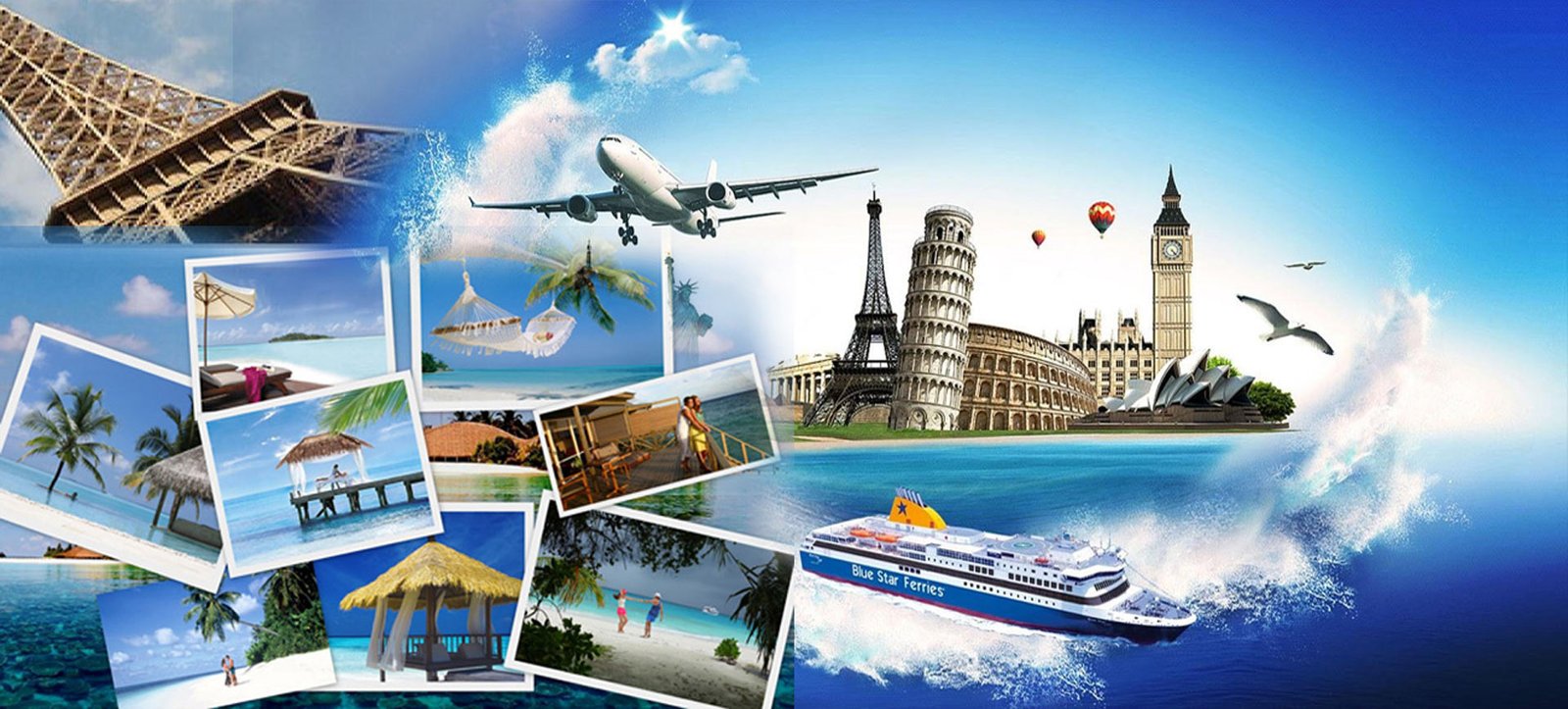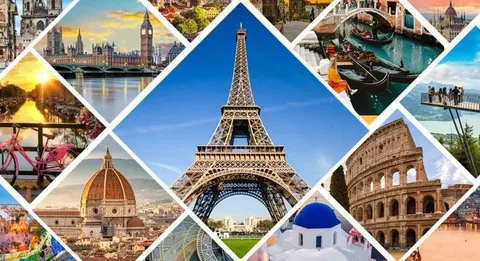Introduction
Travel in 2025 is no longer just about ticking destinations off a list — it’s about connecting with the heart and soul of a place. For culturally curious travelers and history lovers, cities across the globe offer immersive experiences that bridge the past with the present. From ancient ruins and medieval old towns to world-class museums and vibrant local traditions, the world is full of destinations where culture and history intertwine beautifully. In this guide, we explore the must-visit cities for culture and history in 2025, places that tell captivating stories and preserve the legacy of human civilization.
Rome Italy The Eternal City of Antiquity
No list of cultural cities is complete without Rome. With over 2,500 years of history, the Italian capital is a living museum. In 2025, Rome continues to captivate visitors with its ancient ruins, Renaissance art, and Baroque architecture. Wander through the Colosseum, Roman Forum, and Palatine Hill to relive the glory of the Roman Empire. Marvel at masterpieces in the Vatican Museums and admire Michelangelo’s Sistine Chapel ceiling. Rome’s vibrant piazzas, trattorias, and artisan shops add a modern charm to this historic wonderland.
Kyoto Japan Preserving the Soul of Traditional Japan

Once the imperial capital of Japan, Kyoto is a cultural jewel. In 2025, it remains one of the best cities to experience authentic Japanese traditions, from tea ceremonies to Zen gardens. Visit the centuries-old Kinkaku-ji (Golden Pavilion), explore the geisha district of Gion, and take part in seasonal festivals like Hanami (cherry blossom viewing). Kyoto’s preservation of its shrines, temples, and wooden Machiya townhouses offers a peaceful contrast to modern Tokyo, making it essential for history buffs and culture seekers alike.
Athens Greece Cradle of Western Civilization
Few places match the historical importance of Athens, where democracy, philosophy, and classical art were born. In 2025, the city effortlessly blends its ancient past with modern Greek culture. Stand before the iconic Parthenon on the Acropolis, stroll through the Plaka district, and discover artifacts at the Acropolis Museum. Athens is also emerging as a contemporary cultural hub, with vibrant street art, outdoor cinemas, and growing culinary diversity. It’s a city where every corner tells a story going back thousands of years.
Cairo Egypt Gateway to Ancient Civilizations
In 2025, Cairo remains a bucket-list city for anyone fascinated by ancient history. Home to the nearby Great Pyramids of Giza and the Sphinx, Cairo also offers treasures like the Grand Egyptian Museum, showcasing thousands of artifacts including King Tutankhamun’s golden mask. The city’s Islamic and Coptic quarters tell of later eras with their ornate mosques, churches, and bazaars. With upgraded tourism infrastructure and renewed preservation efforts, Cairo is once again a top global destination for cultural exploration.
Istanbul Turkey Where East Meets West
Istanbul stands as a cultural crossroad — straddling both Europe and Asia, it reflects the rich legacies of Byzantine, Roman, and Ottoman empires. In 2025, the city continues to inspire with landmarks like Hagia Sophia, the Blue Mosque, and Topkapi Palace. Wander through the Grand Bazaar or take a ferry across the Bosphorus to see the blend of tradition and modernity. Istanbul’s cuisine, music, and arts reflect its diverse influences, making it one of the most dynamic historical cities in the world.
Paris France Art Architecture and Intellectual Legacy
Paris has long been synonymous with culture, fashion, and intellect. In 2025, the French capital remains a hub for global travelers drawn to its museums, architecture, and literary history. From the Louvre and Musée d’Orsay to Notre-Dame and the Eiffel Tower, the city brims with cultural landmarks. Take a walk through Montmartre, once home to Picasso and Monet, or visit the Latin Quarter, rich in academic and revolutionary heritage. Paris also leads in contemporary arts, with countless galleries and performance spaces scattered throughout the city.
Cusco Peru The Heart of the Inca Empire
Often referred to as the historical capital of Peru, Cusco is a blend of Inca heritage and Spanish colonial architecture. As the gateway to Machu Picchu, Cusco draws thousands of cultural travelers each year. In 2025, preservation efforts have made the city’s cobbled streets, ancient walls, and cathedrals even more accessible. Visit Qorikancha (Temple of the Sun) and the Sacsayhuamán fortress, then explore vibrant markets and festivals rooted in Andean traditions. Cusco offers a rich tapestry of indigenous and colonial culture, preserved high in the Andes.
Fez Morocco The Living Medieval City
Fez is often called the spiritual and cultural capital of Morocco. Its medina, a UNESCO World Heritage Site, is the world’s largest car-free urban area and feels like stepping back into the Middle Ages. In 2025, the city remains a living museum of Islamic architecture, ancient universities, and artisanal craftsmanship. Visit the Al Quaraouiyine University, the oldest in the world, and watch traditional leather tanning at Chouara Tannery. Fez provides an immersive journey into North African history and hospitality.
Prague Czech Republic A Fairytale of Gothic and Baroque
Prague is a city where history whispers from every stone street. In 2025, its Gothic churches, medieval squares, and Baroque palaces attract culture enthusiasts and romantics alike. The Prague Castle, Charles Bridge, and Old Town Square with its Astronomical Clock are just a few of the iconic sites. Yet the city is also modernizing its cultural landscape, with indie art scenes, jazz clubs, and literary cafes thriving throughout. Affordable, walkable, and rich in history, Prague is perfect for immersive cultural travel.
Jerusalem Israel A Crossroads of Faith and History
One of the oldest cities in the world, Jerusalem holds sacred significance for Judaism, Christianity, and Islam. In 2025, it remains a deeply spiritual and historical place that draws millions seeking insight into religious and cultural heritage. Walk the Via Dolorosa, pray at the Western Wall, and admire the Dome of the Rock. The city’s museums, archaeological sites, and preserved quarters offer lessons from millennia of human civilization. Despite modern complexities, Jerusalem is a must-visit for those who want to witness history alive and evolving.
Conclusion
In 2025, the best cultural and historical experiences don’t come from ticking off landmarks — they come from truly connecting with the stories, people, and heritage of a place. These must-visit cities offer far more than iconic monuments; they invite you to walk through centuries of human achievement, resilience, and creativity. Whether you’re exploring the ruins of ancient empires or engaging with living traditions, these destinations will deepen your understanding of the world. Choose wisely, travel respectfully, and let history guide your journey.
















